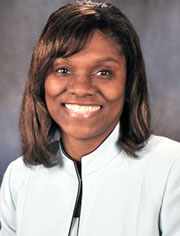T
Desiree Bryant
Assistant Director,
Project Coordinator
create
HE BILL AND MELINDA GATES FOUNDATION are refocusing its philanthropy efforts on school networks. Reasons for collaboration and cooperation is flexibility to fit various needs, and to benefit schools of all sizes and locations. Existing cooperatives and collaboratives have focused on improving STEM in Appalachia, green schools, and getting competitive pricing and quality of items such as technology, food services, playground equipment, educational furniture, supplies, instructional support, sports equipment, and uniforms for school sports. There’s strength in working together; which in our regions could prove to be beneficial in these and other areas. “It takes teamwork to make the dream work!”
Makerspaces
This is a trend that has been building for the past few years, mainly with hands-on experiences in school media centers, but range from using low-tech craft supplies to advanced digital tools. More schools are incorporating spaces for maker activities; adopting a philosophy of “Making is how we learn.”
Personalized
professional development
In recent years, districts have been moving away from a uniform approach to Professional Development, and towards a more personalized approach. “Online PD systems and micro-credentials are a few of the ways districts are personalizing learning for their educators.” A couple of the ways that have been used in our division to personalize PD is through the Adventist Learning Community (ALC) through the NAD Office of Education, and the Teacher Education Self-Assessment Instrument and Annual Action Plan piloted a few years ago in the Potomac Conference.

K-12 Trends in 2018
District cooperatives and collaboratives
fall 2018